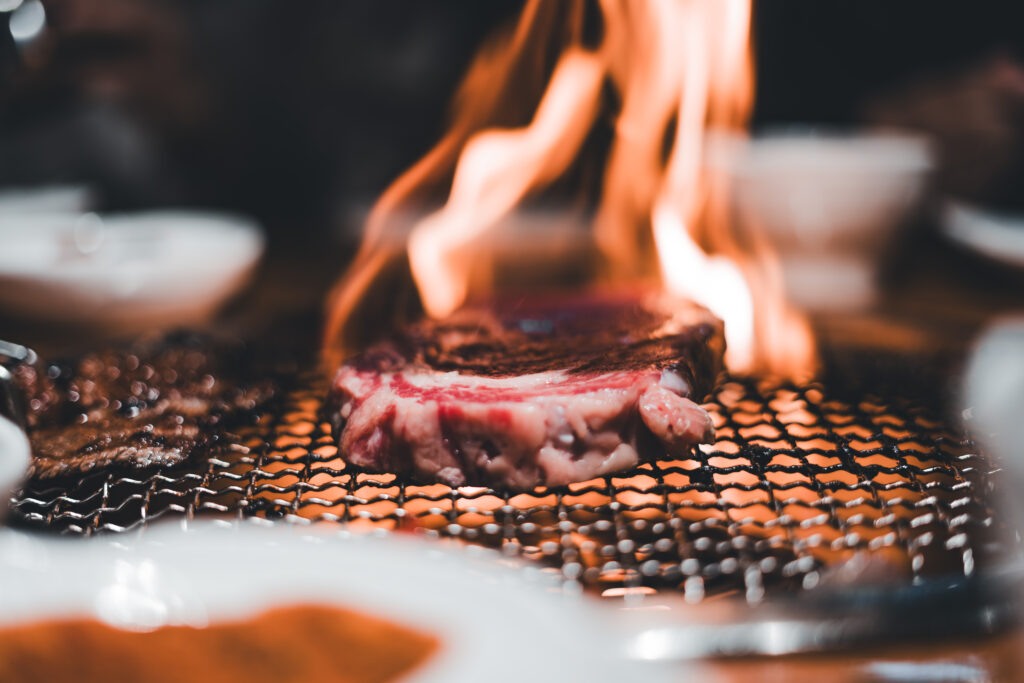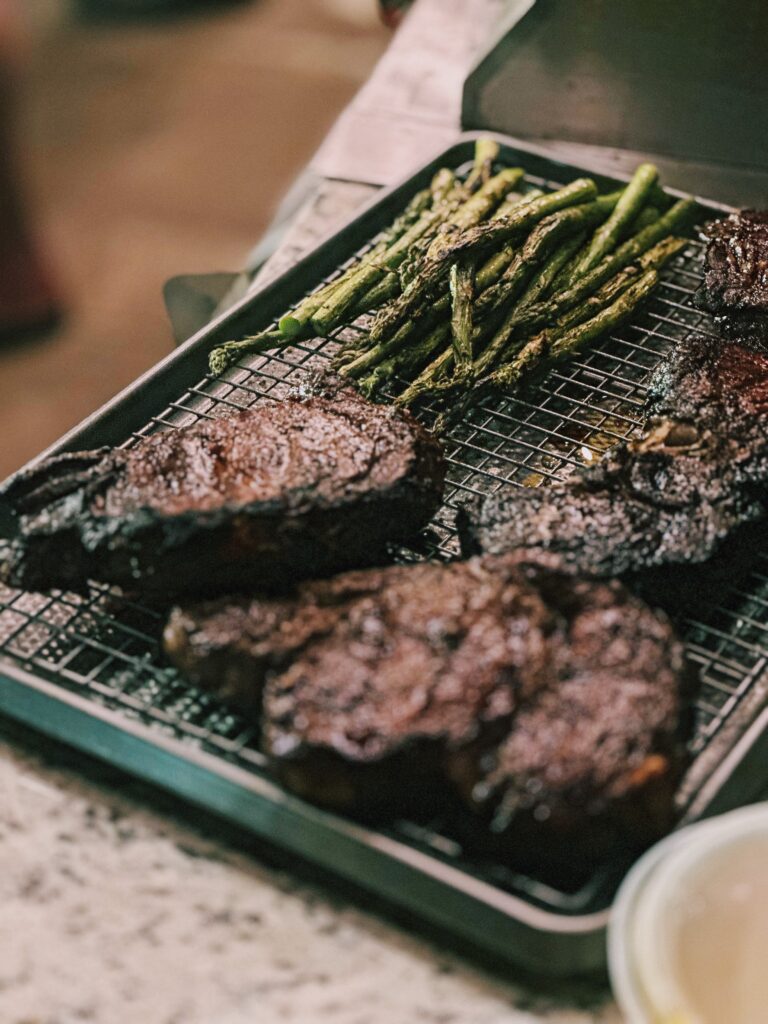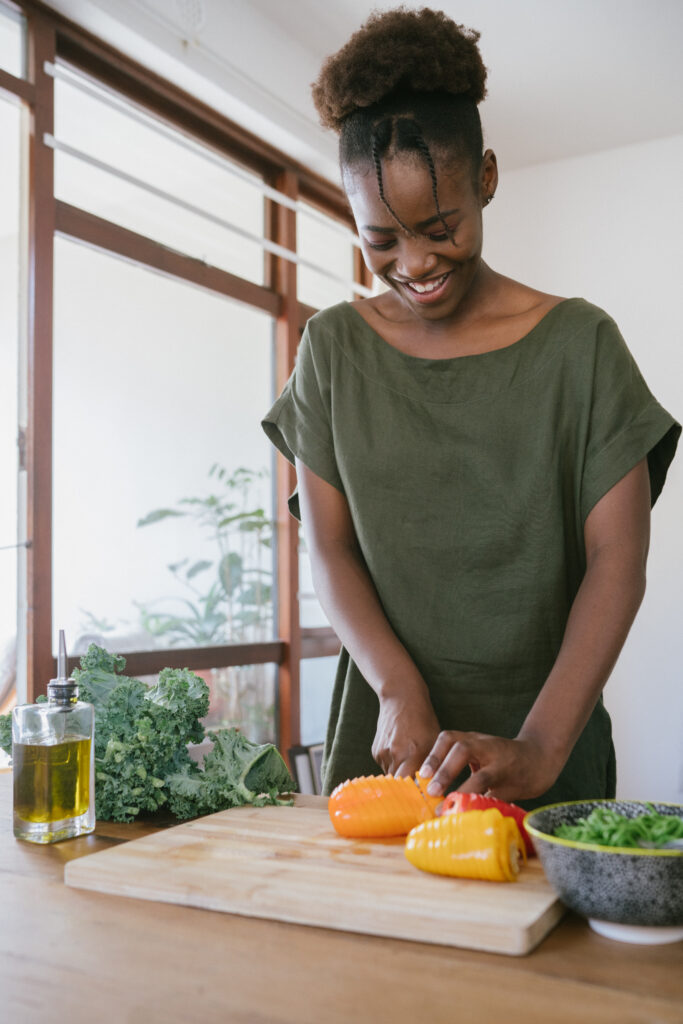Grilling kale may seem like an unconventional idea, but trust me, it’s an absolute game-changer. The heat of the grill transforms this leafy green into a delightful and crunchy treat that will take your taste buds on a flavorful adventure. If you’ve been wondering how to bring out the best in kale while adding a smoky twist, look no further. In this article, we’ll guide you through the simple steps of grilling kale to perfection, ensuring that you unlock its full potential and impress your friends and family with a unique and delicious dish. So grab your tongs and let’s get grilling!

Choosing the Right Kale
When it comes to grilling kale, choosing the right variety is essential. There are several different types of kale available, each with its own unique flavor and texture. Some popular varieties include curly kale, dinosaur kale, and Red Russian kale. Curly kale, with its frilly leaves, is the most common and widely available variety. Dinosaur kale, also known as Lacinato or Tuscan kale, has dark green leaves and a sweeter taste. Red Russian kale, as the name suggests, has vibrant red veined leaves and a milder flavor.
When selecting kale for grilling, look for fresh, crisp leaves that are vibrant in color. Avoid any kale that appears wilted or has yellowed leaves. The leaves should be firm to the touch, and the stems should be sturdy. Remember, the quality of the kale you choose will greatly impact the taste and texture of your grilled dish, so take your time to select the best kale available.
Preparing Kale for Grilling
Before you can start grilling kale, it’s important to properly prepare it. This involves a few simple steps to ensure that your kale is clean and ready for the grill.
Washing Kale Properly
Start by rinsing the kale under cool running water to remove any dirt or debris. Gently rub the leaves to remove any stubborn dirt or sand. If the kale has any visible dirt on the stems, use a soft brush to clean them thoroughly. Once the kale is clean, pat it dry with paper towels or use a salad spinner to remove excess moisture. Ensuring that the kale is dry will prevent it from becoming soggy when grilled.
Removing Stems and Ribs
Next, you’ll want to remove the tough stems and ribs from the kale leaves. While the stems and ribs are perfectly edible, they can be quite chewy and tough, especially when grilled. Simply hold the kale leaf by the stem and run a knife along each side of the stem, removing it completely.
Drying the Kale Leaves
After removing the stems and ribs, pat the kale leaves with a clean kitchen towel to remove any additional moisture. Ensuring that the leaves are dry will prevent them from sticking to the grill and help them crisp up nicely during cooking.
Marinating Kale
Marinating kale before grilling can add an extra burst of flavor and help tenderize the leaves. Here’s what you need to know about marinating kale.
Choosing a Marinade
When selecting a marinade for your grilled kale, the options are endless. You can go for a classic combination of olive oil, lemon juice, garlic, and herbs for a simple yet delicious marinade. Alternatively, you can experiment with different flavors and spices to create a marinade that suits your taste preferences. Consider adding balsamic vinegar, soy sauce, honey, or even a touch of hot sauce to give your kale a unique twist.
Applying the Marinade to Kale
To apply the marinade to the kale, place the leaves in a large bowl and pour the marinade over them. Use your hands or tongs to massage the marinade into the leaves, ensuring that they are evenly coated. Let the kale sit in the marinade for at least 30 minutes to allow the flavors to penetrate the leaves.
Allowing the Kale to Marinate
Once you’ve marinated the kale, it’s important to let it sit and absorb the flavors. This can be done by covering the bowl with plastic wrap or transferring the kale to a sealable plastic bag. Place the marinated kale in the refrigerator and let it sit for at least 30 minutes, but ideally, let it marinate for a few hours or overnight for maximum flavor.
Preheating the Grill
Before you start grilling the kale, it’s crucial to preheat your grill properly. This will ensure even heat distribution and prevent the kale from sticking to the grill grates.
Preparing the Grill
Start by cleaning the grill grates to remove any residue from previous grilling sessions. This can be done by scrubbing the grates with a grill brush or scraper. Once the grates are clean, preheat your grill to medium-high heat. It’s important to let the grill heat up for at least 10-15 minutes before you start grilling.
Heat Adjustment for Grilling Kale
When it comes to grilling kale, you want to achieve a nice balance of heat. If the grill is too hot, the kale may burn and become crispy without cooking through. On the other hand, if the grill is not hot enough, the kale may wilt without developing that desired charred flavor. Aim for a grill temperature of around 400-450°F (200-230°C) for the best results.

Grilling Kale
Now comes the exciting part – grilling the kale! Follow these steps to achieve perfectly grilled kale every time.
Direct vs. Indirect Heat
When grilling kale, you have the option of using either direct or indirect heat. Direct heat means placing the kale directly over the flames or heat source, while indirect heat involves cooking the kale away from the direct heat source. Both methods can produce delicious results, so it’s a matter of personal preference.
Placing the Kale on the Grill
Once your grill is preheated, carefully place the marinated kale leaves on the hot grill grates. Be sure to leave enough space between the leaves to allow for even cooking. If using direct heat, place the kale directly over the flames or heat source. If using indirect heat, place the kale away from the flames or heat source.
Flipping the Kale
After a couple of minutes, check the bottom side of the kale leaves for grill marks and a slightly charred texture. Once the leaves have developed grill marks and are slightly charred, flip them over using a pair of tongs. This will ensure that both sides of the kale are evenly cooked and have a beautiful charred appearance.
Grilling Time
The grilling time for kale will depend on the size and thickness of the leaves, as well as your desired level of crispness. In general, kale leaves will take around 3-5 minutes per side to cook to perfection. Keep an eye on the leaves and adjust the grilling time as needed. You want the leaves to be slightly wilted and charred, but not overly cooked or burnt.
Adding Flavors
Once the kale has been grilled to perfection, you can enhance its flavor by adding additional toppings or dressings.
Sprinkling Seasonings
To elevate the flavor of grilled kale, consider sprinkling it with seasonings such as salt, pepper, garlic powder, or chili flakes. These simple seasonings can add an extra kick and complement the smoky caramelized flavors from grilling.
Drizzling Oil or Dressing
Another way to enhance the flavor of grilled kale is by drizzling it with your favorite oil or dressing. Extra-virgin olive oil, balsamic glaze, or a tangy vinaigrette can all add a burst of flavor and moisture to the grilled kale. Drizzle the oil or dressing over the kale just before serving for maximum impact.

Monitoring the Grill
While grilling kale, it’s important to keep an eye on the grill to ensure that the kale is cooking properly and not becoming overcooked or charred.
Checking for Charring
Periodically check the kale leaves for charring, as excessive charring can result in a bitter taste. If you notice any parts of the kale starting to blacken or burn, move those leaves to a cooler part of the grill or adjust the heat accordingly.
Preventing Overcooking
Grilling time can vary depending on the heat of your grill and the size of the kale leaves. To prevent overcooking, it’s important to keep a close eye on the kale as it grills. You want the leaves to be tender and slightly charred, but not overly wilted or burnt. If you’re unsure about the doneness, you can always test a leaf by tasting it or using a fork to check the texture.
Removing Kale from the Grill
When the grilled kale is cooked to your desired level of doneness, it’s time to remove it from the grill and prepare it for serving.
Ensuring Proper Cooked Texture
Using tongs, carefully transfer the grilled kale leaves to a clean platter or plate. The kale should be slightly wilted, tender, and have a lovely charred appearance. Avoid letting the kale sit on the hot grill grates for too long after it’s cooked, as it can continue to cook and become overdone.
Serving and Enjoying Grilled Kale
Grilled kale is a versatile dish that can be enjoyed in various ways. Here are some suggestions for serving and enjoying your grilled kale creation.
Plating the Grilled Kale
To serve the grilled kale, arrange the leaves on a large platter or individual plates. You can leave the leaves whole or tear them into smaller pieces, depending on your preference. The vibrant colors and smoky aroma of the grilled kale will make an impressive presentation on any plate.
Garnishing Options
To add extra flavor and visual appeal, consider garnishing the grilled kale with various toppings. Sprinkle some freshly grated Parmesan cheese, toasted nuts, or even dried cranberries for a touch of sweetness. Fresh herbs such as basil or parsley can also add a burst of freshness to the dish.
Pairing Suggestions
Grilled kale pairs well with a variety of other flavors and ingredients. Serve it as a side dish alongside grilled meats or seafood for a complete meal. You can also use grilled kale as a topping for burgers, sandwiches, or wraps. Its smoky flavor and hearty texture make it an excellent addition to any dish.
Grilling Tips and Tricks
To make your grilling experience even more successful, here are some additional tips and tricks to keep in mind.
Maintaining Grill Temperature
Throughout the grilling process, it’s important to monitor and maintain the temperature of your grill. If the temperature drops too low, the kale may not cook through properly, resulting in a soggy texture. On the other hand, if the temperature gets too high, the kale may burn and become overly charred. Keep an eye on the grill temperature and make adjustments as needed.
Using a Grill Basket
If you’re concerned about the delicate kale leaves falling through the grill grates, consider using a grill basket. A grill basket is a handy tool that makes it easier to grill small or delicate ingredients without the risk of them falling apart or sticking to the grates. Simply place the marinated kale in the grill basket and grill as usual.
Preventing Sticking
To prevent the kale leaves from sticking to the grill grates, make sure the grates are clean and properly preheated. Additionally, you can lightly brush the kale leaves with oil before grilling to create a barrier between the leaves and the grates. This will help the kale cook more evenly and prevent it from sticking.
Grilling kale can be a fun and flavorful way to enjoy this nutritious leafy green. By choosing the right kale variety, properly preparing and marinating the leaves, preheating the grill, and grilling the kale to perfection, you can create a delicious and healthy dish that is sure to impress. Don’t be afraid to experiment with different flavors, seasonings, and toppings to customize your grilled kale to your liking. So fire up the grill and get ready to savor the smoky goodness of grilled kale!


